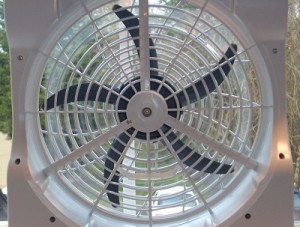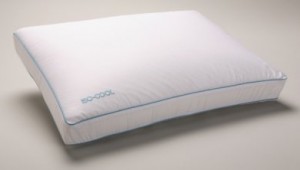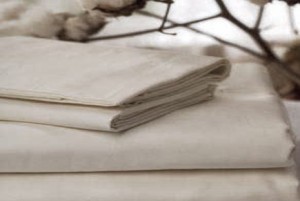Its summertime folks and that means soaking up the sun, good food/cold drinks, spending time with family and friends, and enjoying the great outdoors. But what happens at the end of the night when you’re worn out from it all and ready to crash? You retreat to your blissful, inviting bedroom; your comfy bed beckoning you as you delight in the fact that you are mere moments away from drifting off peacefully into dreamland… Aaaaah….
But wait!…(cue scary music) Dunt Dunt Duuuuuun!!!
In the middle of the night you awaken only to discover that a suffocating blanket of heat has infiltrated your bedroom sanctuary; pouring in like a sun-fire army whose only mission is to make you sweat profusely as you toss and turn, trying in vain to find mercy from the hell-sauna that your once heavenly bedroom has transformed into. Now it’s your daunting mission to peel your body off of your soggy pillow and try to wrestle your sheets off by flailing your limbs as though you were staving off a hungry anaconda.
So what’s a person to do? How can we fight this epidemic that has plagued human-kind since before the dawn of time?… Okay okay, maybe I’m being a tad dramatic but c’mon, heat + sleep = baaaaaad news. The two simply do not mix. So what can we do to avoid feeling like we’re sleeping inside of a dragon’s mouth all summer?
Well, it’s pretty much a given that no one wants to pay out of their eyeballs, so here are a few suggestions that can help keep you cool without severely running up your energy costs by blasting your beloved air conditioner:
*There’s the old standby, making sure that you open a window at night allowing the cool night air to breeze through. It’s important to have a fan circulating the air as well. And while ceiling fans are ideal, placing a fan in or around an open window will help to ensure that a cool breeze flows through your room all night. To up the ante, place a bowl of ice in front of the fan to maximize coolness.

*Being mindful of the fabrics that you lie on is also a must. Choose cool breathable fabrics that won’t retain your body heat, inviting sweat to come out and play. This will also help prevent them from sticking to you like that clingy ex-boyfriend that you’ve been trying to ditch for the past two months…Or wait, is that just me? Hmm…Anyway, back to my point; fabrics like cotton and satin are smooth comfortable and cooling, which make them perfect for summertime bedding.
*Make sure to keep yourself hydrated with good ol’ fashioned H2O. The cooling effects of drinking cold water are both satisfying and immediate and can help keep you cool for hours. Keep a glass handy on your nightstand for when your mouth starts to feel like the Sahara Desert.
*Lastly, if possible, check out different products that can help to keep you cool. There are some really cool, revolutionary pillows that work wonders for those sweltering summer nights. One brand in particular contains a state of the art material that actually balances your changing body temperature to provide a comfortable, cooling effect. Talk about cool, Iso-Cool to be exact (<=insert shameless plug here). This line of pillows are top-of-the-line and budget friendly, ranging from $39.99-$79.99 and come in sets of 2, 4, or 6, in case you fall in love and have to have more! Interested? Check them out for yourself: http://www.pillows.com/isocoolpillows.html (If you’re going to make a purchase, why not make it somewhere where the people are friendly, relatable and have a singular goal: to satisfy your sleepy time needs?)


So there it is folks. A few tried and true methods, along with a couple new. Check them out, test them out… Dare I say enjoy them? Guess that one is for you to decide 🙂 In any regard, enjoy your summer and remember, stay cool (pun intended)
-Sleep Well, Live Well
Blog Author, Monique, Content Manager







